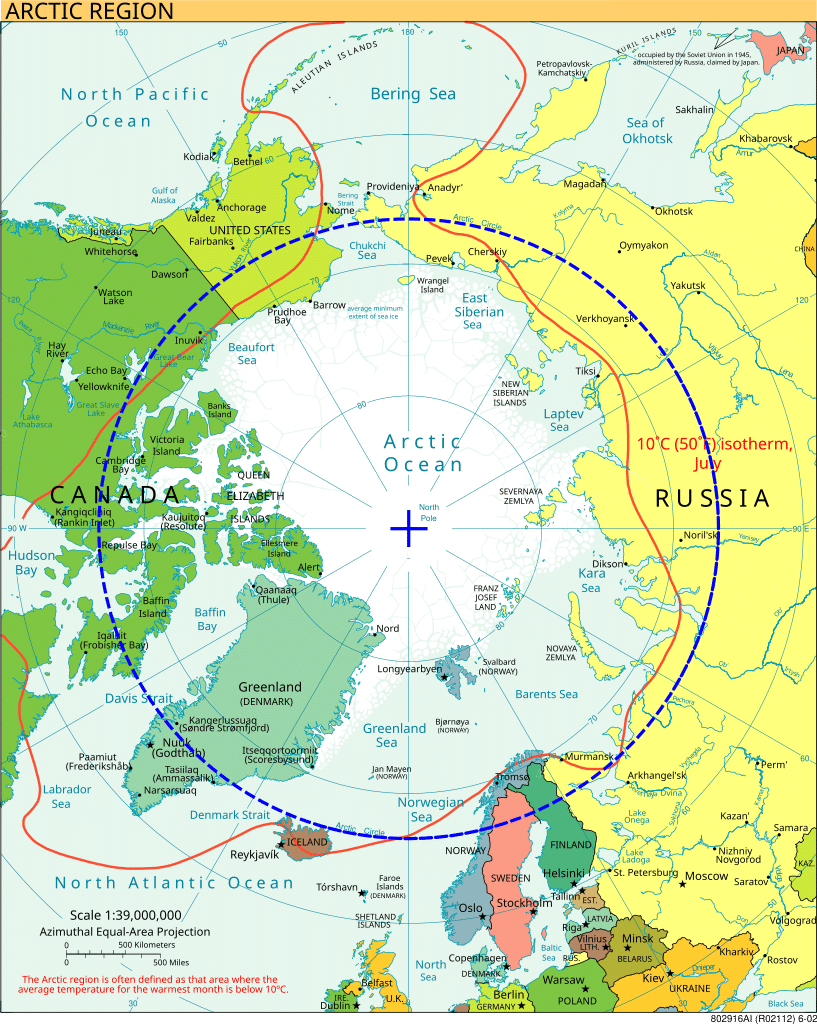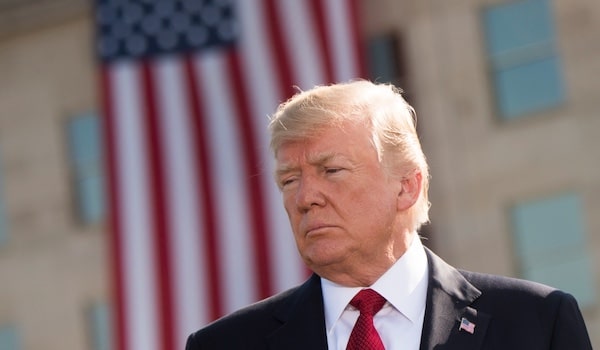You might think Donald Trump’s suggestion that the U.S. could buy Greenland from Denmark is just bonkers.
In December he said U.S ownership of Greenland was ‘an absolute necessity.’ On Tuesday when he was asked at a press conference whether he would rule out using ‘military or economic coercion’ to take over both Greenland and Panama—which Trump has also said he wants the U.S. to own—the president-elect responded: ‘No, I can’t assure you on either of those two, but I can say this: We need them for economic security.’
It’s not the first time Trump has mooted this idea. Back in 2019, during his previous term in office, he said his administration was considering buying Greenland from Denmark and that the proposal was ‘strategically interesting.’
On the same day, Trump Senior addressed that press conference, Donald Trump Jr jetted into Greenland, saying his visit was ‘a little bit of fun,’ and that ‘as an outdoorsman, I’m excited to stop into Greenland for this week.’ He handed out baseball caps with ‘Make Greenland Great Again’ emblazoned on them.
Trump threatened economic sanctions against Denmark if it refused to sell, stating that the U.S., ‘would tariff Denmark at a very high level.’ Turning to Canada, Trump said he would not rule out using ‘economic force’ to turn into a state within the U.S!
Crazy stuff? Well, find yourself a globe, locate the North Pole and look at which countries border the Arctic Circle. Russia has the longest stretch of coastline, but the others are the U.S., Canada, Denmark (Greenland is autonomous but Copenhagen controls defence and foreign-policy matters), Norway, Sweden and Finland—all those six are of course Nato members, the last two having just joined, ditching neutrality in the wake of the Russo-Ukraine war.

Then think climate change. The sea routes go through the Barents Sea, the currently frozen channel potentially linking the Atlantic to the Pacific via the Barents Straits. Going the other way, there is a potential sea-lane from the Pacific, through the Arctic Sea and down the coast of Greenland to the eastern seaboard of North America. These sea lanes, if ever navigable, would cut big distances off current trade routes and would be of huge economic and strategic importance.
Climate change means the permanent icecap is retreating. Trump is very aware that Greenland has reserves of oil and gas, as well as the rare-earth metals which are in high demand for the electric cars and wind turbines of the green transition, as well as for manufacturing military equipment.
The broadcaster CNN spoke to Klaus Dodds, professor of geopolitics at Royal Holloway, University of London, who pointed out that China currently dominates global rare-earth production and is threatening to restrict the export of critical minerals and associated technologies, ahead of Trump’s inauguration. Dodds explained: ‘There is no question at all that Trump and his advisers are very concerned about the stranglehold that China appears to have… I think Greenland is really about keeping China out.’ That fits with Trump’s emphasis on China being the major threat rather than Russia, and that rivalry must be the central plank of U.S. foreign policy.
Greenland is also of huge military importance to the United States. After Denmark was occupied by the Nazis during the Second World War, American forces moved into Greenland on the basis of an agreement with the Danish ambassador to Washington. The island was vital to keeping the Atlantic sea lanes, on which Britain depended, open and, when the U.S. joined the war, to the huge military build-up in Britain prior to the June 1944 invasion of Normandy.
After the war ended, the Truman administration refused Danish demands to leave. It offered to buy the property, but it was rejected. After the formation of Nato in 1949, Copenhagen agreed a treaty allowing U.S. military bases there—very much on the front line of the Cold War with the then Soviet Union.
The Thule Air Base, established in 1952, hosted Strategic Air Command bomber and reconnaissance aircraft, interceptors and Nike nuclear-tipped surface-to-air missiles. The Ballistic Missile Early Warning System was based there in 1961, and Greenland still remains key to early warning radar systems.
Thule was site of one of the worst nuclear accidents, in 1968, when a cabin fire broke out in a B-52G bomber carrying four thermonuclear gravity bombs. It crash landed onto the frozen sea. It’s likely three nuclear weapons exploded on impact. The fourth was never accounted for.
Thule was transferred to the U.S. Space Force in 2020 and renamed the Pituffik Space Base three years afterwards. It is central to U.S. space and missile warning systems, is home to the most northern naval harbour in the world and, since 2023, is also home to U.S. fighter detachments. The Pentagon, however, fears that Russia has a far greater military presence in the Arctic and wishes to significantly boost its presence there.
The idea of buying Greenland is not quite so mad if you know your history. The U.S. has considered doing so in 1867, 1910, 1946, and 2019. These instances came to nothing, but the Danes were open to business in 1917 when they sold Washington the Danish West Indies, now the Virgin Islands, for $25 million ($600 million in today’s terms).
Of course, the U.S. has bought other territories. Fifteen current U.S. states running from the Gulf of Mexico (which Trump wishes to rename) to the border with Canada were obtained via the Louisiana Purchase, when Napoleon sold this vast territory. Alaska was bought in 1867 from Tsarist Russia. So, Trump is following in a long tradition.
His attitude towards Denmark reflects his detestation of Nato—believing it gives the Europeans a free ride in matters of defence. That must be causing worries in the European chancelleries. It will mean Starmer in the UK will toady up to him even more than he does already.
Trump will be bequeathed a war in Ukraine which Kyiv is almost certain to lose. That will be viewed as a major setback for the U.S. The new president will be looking at how he can reassert U.S. military dominance.
For Trump, the main enemy is not Putin. He promised in his election campaign to end the Ukraine war, but if all he is offering Putin is a ceasefire that’s not an offer likely to be accepted. Putin will want recognition of Russian occupation of eastern Ukraine and a guarantee Ukraine will never join Nato at a minimum. It’s hard to see Washington accepting that short of a complete Ukrainian collapse (which is not off the agenda).
The war in Ukraine has driven Moscow and Beijing closer and Russia is giving China access to the Arctic. Trump’s threats to Panama—he wants to reinstate U.S. control of the Panama Canal—reflects his belief that the Chinese are building up a presence there and across Latin America.
Newsweek revealed that, last month, a letter from a senior State Department official to Congress said U.S. diplomats are seeking to counter the ambitions of the People’s Republic of China (PRC) in the Arctic. Naz Durakoğlu, an Assistant Secretary of State in the Bureau of Legislative Affairs, wrote that U.S. diplomats have ‘strong concerns about PRC behaviour in the Arctic, to include the PRC’s scientific research in the region—research that could be used for future military operations.’
Durakoğlu wrote to a bipartisan Congressional committee that scrutinises the activities of the Communist Party of China (CCP) warning that there was ‘increasing frequency and complexity of PRC activity in the region,’ creating defence and security challenges for the U.S. as China made increased efforts to garner influence.
Once more return to your globe. It’s obvious that whoever controls Greenland controls a huge military asset. The island is on the front line in a new cold war between West and East.
But what of the 50,000 plus people of Greenland, the majority Inuit. They are opposed to mining and the exploitation of oil and gas because it would destroy their way of life and the ecology of the island. Increasingly they are demanding independence from Denmark.
We should support the right of Greenland to self-determination. I feel it’s unlikely they would opt to sell themselves to Washington. After all Trump sounds and acts like a nineteenth-century imperialist.

